Martin Fone's Blog, page 63
January 8, 2024
Brat Farrar
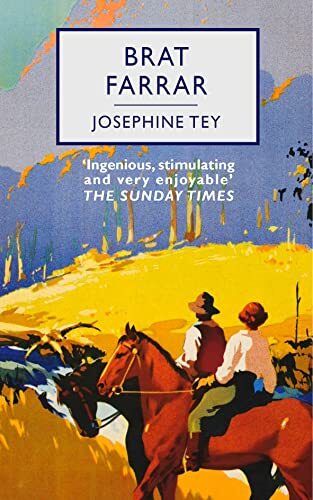
A review of Brat Farrar by Josephine Tey – 231208
Originally published in 1949, Brat Farrar, which also goes by the alternative title of Come and Kill Me, is described as a mystery novel and sees Tey at her impressive best. It is a profoundly troubling book as it places the reader in a moral dilemma as to how much sympathy to expend on the eponymous character.
Between them Brat and a ne’er-do-well, Alec Loding, whom he meets on the London streets, hatch a plan to wrest control of the Ashby inheritance. Playing upon Brat’s uncanny resemblance to the Ashby clan, a point which becomes of increasing importance as the story unfolds, and the disappearance of the elder twin, Patrick, heir to the estate, at the age of thirteen, presumed to have committed suicide by drowning, Alec, who knows the Ashby family well, schools Brat to assume the identity of the missing twin. The plan is that they split the inheritance on a 50/50 basis.
Brat proves to be an outstanding student, growing into the role of Patrick with consummate ease, assimilating every little detail of the elder twin’s life and life at the family home, Latchetts, including those little incidents that only someone who had really been there could possibly know. Tey takes her time over this section, recognising that it is crucial to the success of the story.
Brat successfully convinces the family lawyer convinces that he is really Patrick, concocting a story which has him stowing away on a boat across the channel, working his way through France and then making it to America where he worked with horses, his passion. Part of the attraction to him of settling in Latchetts is that it is a horse stable. Brat also convinces the mater familias, his “aunt” that he is Patrick and plans are laid for his return to the bosom of the family.
His return is not universally welcomed, not least by Simon, Patrick’s younger twin, who is robbed of the inheritance that he believed was his. Relations are difficult and Tey is excellent in portraying the family’s reactions and Brat’s growing unease that his deception will be revealed. Simon cannot believe that the newcomer is Patrick and this overt hostility has a twofold effect. It makes Brat grow closer to Patrick and makes him determined to discover what really happened on that fateful night.
The key to the mystery is an old shepherd who helps to shed doubt on Simon’s alibi that he was elsewhere at the time of Patrick’s disappearance. As Brat attempts to reconstruct what happened, he is surprised by Simon and there is fight with tragic consequences. The truth about Brat’s deception emerges, as does the reason why he so closely resembles the Ashbys. Tey finds her way to give the story a satisfying resolution.
Clearly, Brat is a cuckoo in the nest, but he is portrayed as a rogue with a conscience. As we learn more about him our disgust at his audacity subtly changes to sympathy for his plight. The strength of the book lies in Tey’s eye for detail, her layering of information that enables us to get a growing understanding of the complexities of Brat’s character and her careful portrayal of the domestic rhythms of life at Latchetts which his arrival upsets.
It is an impressive book and reemphasises what a wonderful and woefully neglected writer Josephine Tey is.
January 6, 2024
Four Pillars Navy Strength Gin

My stock of Navy Strength gin was running low and so now was a good time to invest in a bottle of a gin that has been on my wish list for some time. Four Pillars was established in 2013 by Matt Jones, Cameron Mackenzie, and Stuart Gregor just as craft distilling was beginning to take off in Australia. Now it is well established, having been awarded the title of the world’s leading gin producer by the International Wine & Spirits Competition (IWSC) three times, in 2019, 2020, and 2023, and in 2022 became Australia’s first certified carbon neutral gin distillery as well as being awarded the IWSC’s inaugural Green Spirits Initiative trophy. Impressive credentials.
Since 2015 they have been based in a former timber yard in Healesville in the Yarra Valley in Victoria, famed for its wine production, and in 2020 opened the Surry Hills Laboratory housing a working copper still and a cocktail bar to tease the palates of Sydneyites and tourists. They have six copper stills, the original, Wilma, now joined by Jude, Eileen, Beth, Coral, and Linda, and produce an extensive range of gins.
As is the way with Navy strength gins, the distillers choose to base it on one of their less powerful products, in this case Four Pillar’s Rare Dry Gin, but with some twists and turning up the volume to 11. For their Navy Strength they have halved the amount of oranges they normally use and have replaced them with a native Australian finger lime called Judy’s Everbearing and some additional ginger. The other botanicals include Tasmanian pepperberry, lemon myrtle, cinnamon, cardamom, coriander seeds, star anise juniper, lavender, and angelica root. It is not to be messed with, carrying a fighting weight of 58.8% ABV.
The aroma on opening the bottle is intense, a battle royale waged between the competing forces of juniper, cardamom, ginger, and lime. It gives the spirit an intriguing sense of come and get me, an invitation that is too good to resist. In the glass, it is clear when poured neat but louches with the addition of a premium tonic. It is spicy and citric, slightly sweet, with some earthiness provided by the juniper. The aftertaste lingers, a mix of earthy juniper, pepper, and citrus. A drink to be treated with respect, it is designed to be sipped and appreciated, but for me the juniper has a struggle to assert itself making it a spirit out of the contemporary in style rather than a London Dry.
The bottle design itself would not win any prizes, functional and utilitarian. Using clear glass the shape is rounded, slightly narrowing at the base, with a steep shoulder onto which is embossed four dimples, presumably representing the four pillars. The neck is short, leading to a blue cap and an synthetic stopper. The label around the neck tells me my gin was made in the stills Wilma and Jude in 2020. The labelling deploys a white background and blue print and on the right hand side of the label the distillers identify the four selling points of the gin, viz intense flavours enhanced by finger limes, navy strength, ideal for cocktails and made for the serious gin lover.
While the list might give the impression that they have run out of ideas to sell their gin, there is no doubting that this is a seriously impressive gin made with considerable care and skill. It might not be my favourite Navy Strength gin but its distinctive taste and warmth will help me through the inter.
Until the next time, cheers!
January 5, 2024
The Twenty-Third Man
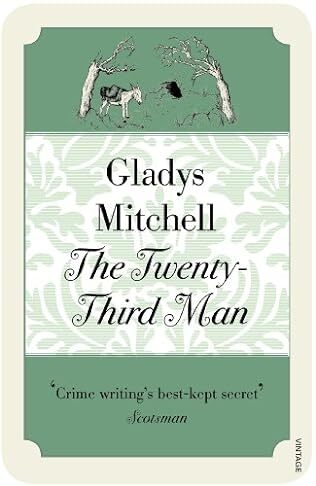
A review of The Twenty-Third Man by Gladys Mitchell – 231207
Well, it’s 1957 and the thirtieth novel in Gladys Mitchell’s long running Mrs Bradley series has just been published. Picking it up, her intrepid band of readers will wonder what is in store for them. Will it be a novel with an almost incomprehensible plot and solution or will it be accessible with a plot that sort of hangs together? Like me, they would have probably concluded upon reaching the final page that this is one of her more accessible novels and merits a place in the upper quartile of her better efforts.
This is another of Mrs Bradley’s foreign jaunts, to the island of Hombres Muertos, an island that takes six days to reach by sea from Liverpool. It takes its name from a cave in which there are the mummified bodies of twenty-three kings. To add some further spice to the Gothic atmosphere of the island, there is a community of troglodytes and a group of bandits who delight in kidnapping those foolish enough to stray unaccompanied to the cave and ransom them.
Sharing this odd holiday destination with Mrs Bradley, now characterised as Dame Catherine, are a motley crew of individuals who are either mentally unbalanced, at worst, or eccentric at best. There is a young widow and her brother, the latter who in an act of cowardice ran away as his brother-in-law was being killed, a botanist with psychopathic tendencies who is growing new species of plant on a remote island, an ornithologist who is thought to be supplying young women to the South American sex trade, a libertine, and a man convicted of manslaughter. What could possibly go wrong?
The nub of the story is that one of the guests leaves the hotel ostensibly to live with the troglodytes but is never seen again. Mrs Bradley’s suspicions are aroused when a highly precocious and unruly child, one who is allowed to follow his spirits by his lax and ineffectual parents, reports that there are twenty-four bodies in the cave. When she gets down there, she finds there are only twenty-three but that the twenty-third is noticeably taller than his companions. Is this where the body has been hidden?
Despite all the suspects being on the island, Mrs Bradley is convinced that the solution to the crime lies in England. She persuades Lucy Gavin together with infant son to come to the island to hold the fort while she, with Inspector Gavin, pursues the truth in Blighty. Of course, she gets to the bottom of what has been going, a complex web of intrigue and past misdemeanours and jealousies, not without some risk to her life, and the denouement plays out on a deserted island just off the coast from Hombres Muertos. It all makes sense, just about, but the path to getting to the truth is rather opaque. The reader just has to hang on in there and enjoy the ride.
As a character, Mrs Bradley has mellowed. There is far less cackling and screeching, the saurian references have been toned down, and her favoured method of attack is to skewer her suspects/victims verbally. There is no little humour, a ragbag of interesting characters, and an inventive plot that puts Mrs Bradley’s detective powers to the test.
January 3, 2024
Perihelion

The elliptical nature of the Earth’s annual solar orbit means that there is one point, the perihelion, when it is closest to the Sun. This occurred in 2024 at 00.38 GMT today (January 3rd), when the centre of the Sun was just 147,100,632 kilometers from the Earth’s centre. Conversely, the point when the Earth’s orbit takes it furthest away from the Sun, the aphelion, will occur this year on July 5th. The difference in distance between the perihelion and aphelion is around five million kilometers or, roughly, around 3% of the average distance of the Earth from the Sun.
The timing of these two points does not coincide with the winter and summer solstices, when the Earth experiences its shortest and longest days respectively. Scientists have calculated that the last time the winter solstice coincided with the perihelion was in 1246 AD. Since then, the date of the perihelion and aphelion has drifted away from the solstices at a rate of around one day every 58 years and between one year and the next the dates can vary by up to two days. By 6430 AD the perihelion will coincide with the vernal equinox.
Curiously, the average temperature of the whole Earth at the perihelion is about 2.3⁰C lower than at the aphelion, meaning that the planet is actually colder when it is closest to the Sun. On the plus side, according to Keppler’s Second Law, planets move more slowly at the aphelion than the perihelion, making the summers in the northern hemisphere two to three days longer than those in the southern.
January 2, 2024
4.50 From Paddington
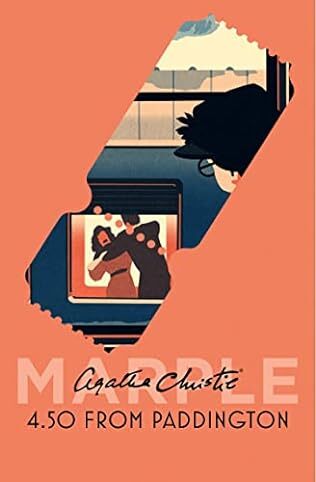
A review of 4.50 from Paddington by Agatha Christie – 231207
Originally published in 1957 and going by the alternative title of What Mrs McGillicuddy Saw, this is the eighth in Christie’s Miss Marples series. It is a story founded upon incredible coincidences. Elspeth McGillicuddy is on her way to St Mary Mead and just at the moment that her train passes another, the blind in the other train shoots up and she sees a man in the throes of strangling a woman. Despite reporting what she had seen to the authorities, she is not believed as no body is found. It is just as well that she is staying with Miss Marple as the spinster sleuth, believing Elspeth to be an impeccable witness, takes up the cudgels and is determined to find out what went on.
If you can find your way past improbability built upon improbability, this is a thoroughly entertaining yarn, perhaps the best in the series so far. The story has been, unsurprisingly, the subject of several adaptations and although it is impossible to approach the book with a tabula rasa, nevertheless it is capable of pulling out a surprise or two and has a terrific twist in its tail. It does not go out with a whimper.
There is more than a touch of Freeman Wills Crofts in the early part of the book as Miss Marple, armed with maps and a copy of Bradshaw’s, sets out to work out where on the line there is a curve great enough to cause a blind to go up and from that where the body is likely to have been hidden. Christie’s touch is lighter than Crofts, though, and what could have been a rather indigestible part of the book blends in seamlessly into the narrative.
The strongest character in the story is Lucy Eylesbarrow, a mix of domestic goddess and tenacious sleuth, whom Miss Marple drafts in to assist her by arranging for her a post at Rutherford Hall, the home of the Crackenshaws and in whose grounds she believes the body is hidden. Showing commendable initiative Lucy finds a couple of clues, fur from a woman’s coat and a cheap compact, and then finds the body of a woman hidden in a sarcophagus. The woman’s clothing is French but the police, led by Inspector Craddock, are baffled as to her identity.
I really enjoyed the scenes involving Lucy and her character came to life. With Miss Marple feeling her age, it must have been tempting for Christie to develop a series involving Lucy but she never seems to have done so. Just restricting her to this book must rate as one of the greatest crimes in the genre of crime fiction.
The other standout characters are the two boys, Alexander, son of Edith Crackenshaw, and his friend, Stodders, down from school for the hols. They seem to step straight out of central casting from public school boy literature but bring to the book a verve and joie de vivre. They also serve as an interesting contrast to the way we treat children today. Rather than being packed off from a house where a murder has been committed or offered counselling, as would undoubtedly have happened today, they are left to roam around, enjoying the thrill of having a real murder on their doorstep and the opportunity to hunt for clues. It makes you wonder which is the best approach.
In essence, this is another story involving a tontine scheme and a desperate attempt on the part of one of the beneficiaries to get their hands on more than their fair share of the loot. The genius of the story is that the culprit is not a direct beneficiary and a number of moving parts must align in order for them to succeed. A re-enactment of what Mrs McGillicuddy saw cooks their goose.
There is not much in the way of formal clueing nor is there much evidence of how Miss Marple reaches her conclusions other than as a result of her omniscience and understanding of human psychology. Nevertheless, it is a rattling good yarn.
January 1, 2024
Murder Intended
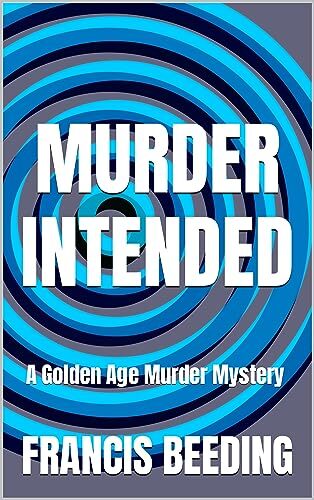
A review of Murder Intended by Francis Beeding – 231206
One of my finds of 2023 has been John Palmer and Hilary St George Saunders who collaborated under the nom de plume of Francis Beeding. Murder Intended was originally published in 1932 and is their take on an inverted mystery, albeit with a twist. It is another novel to feature a tontine arrangement where an inheritance is shared by the surviving heirs, always a recipe for murder.
Agatha Delft is a domineering old woman who, under the terms of her late husband’s will, is obliged to hold a dinner on her birthday, November 17th, and each of her heirs is equally obligated to attend in order to receive their annuity of £200. It is a manifestation of Jaspar’s perverted sense of humour, requiring his wife to carry out a task for which she has no appetite and the potential beneficiaries to toast the longevity of their host, even though they fervently hope she will soon die as they are all cash strapped.
On this particular occasion, Agatha lets it be known that she is too ill to make an appearance but all the rituals, the serving of port by the butler, Rush, and the distribution of the cheques are observed. Without the brooding presence of their host, the guests talk about what would happen if Agatha was no longer around and about murder in general and what were the chances of committing the crime and getting away with it. Not unreasonably, Miss Peebles, Agatha’s companion, feels that the subject with its implied threat to Agatha’s well-being is in poor taste and brings proceedings to a premature end, while informing Agatha of what went on.
That night there is a suspicious death, but it is not Agatha who has met her Maker. The victim is one of the heirs, Rupert, who has a drink problem and who has helped himself during the night to some port which has been laced with poison. The subsequent inquest is treated to a detailed account of the quirkiness of Agatha’s house where liqueur is carefully measured and checked as a precaution against unauthorised consumption, even though she has a fine wine cellar, inherited from Jaspar, kept in another residence which is left vacant. The significance of this house becomes apparent as the story moves towards its denouement.
As other heirs die in suspicious circumstances, it is clear that there is a serial killer at large. Their identity is not difficult to spot, especially as it is all but given away in the first chapter, but the interest in the book lies in whether they will be able to kill everyone on the list or will they be caught. The police, led by Inspector Pilcock, are slow off the mark, but they eventually begin to put the pieces of the jigsaw together.
There is the inevitable damsel in distress, an heir trapped in a wine cellar – surely one of the better fates – a spot of medical archaeology and the lucky chance of some vital records being retrieved just before they are consigned to pulping. The narrative is laced with humour, the dialogue convincing and witty, the characterisation is good, Beeding investing time in the early stages of the book to bring their characters to life, and the general style makes it an easy book to read.
It is an interesting twist on the inverted murder genre and while it does not reach the heights of the other books by Beeding that I have read, it is well worth looking up, especially as the Kindle version is available at a knockdown price. I am sure I will be reading more Beeding in 2024.
December 30, 2023
Digital Or Print?

I am such a voracious reader that I have long abandoned the printed page. Don’t get me wrong, I have hundreds of books and am loathe to get rid of them, even though the chances of reading even a handful of them are minimal. With bookshelves already groaning, it is a question of storage. The cheaper option was to buy a digital reader than to build an extension to house an ever-growing library.
Convenience, portability, never being without something to read are some of the obvious attractions of going digital, but I do miss the touch and feel of a physical book. I also wonder whether an overuse of digital readers has an impact on my comprehension of what I am reading and the ability to retain what I have read. One of the reasons that I have turned to reviewing the books I read is that the process forces me to pay particular attention to what I am reading and that I also I have a record – yes, in digital form – of what it was all about.
That there is some substance to my fears is evidenced by a study published in the ever popular Review of Educational Research conducted by a team of researchers from the University of Valencia. After analysing more than two dozen studies on reading comprehension conducted between 2020 and 2022 involving some 470,000 participants, they have concluded that print reading over a long period could boost comprehension skills by six to eight times more than digital reading does.
The reasons for the association between frequency of digital reading for leisure and text comprehension being close to zero, they suggest, are that the linguistic quality of digital texts tend to be lower and that the mindset for digital reading tends to be shallower with the text being scanned rather than being immersed in. Reading on multi-tasking equipment can be distracting with constant interruptions from other social media programs running on the machine. On the positive side, the negative relationship between digital reading found in primary school children turns positive amongst secondary school pupils.
Digital books read on a single purpose machine might be a different matter, of course. It is a fascinating area of study, but, for now, spatial reasons dictate that I maintain my digital habit.
December 29, 2023
Out Of The Past
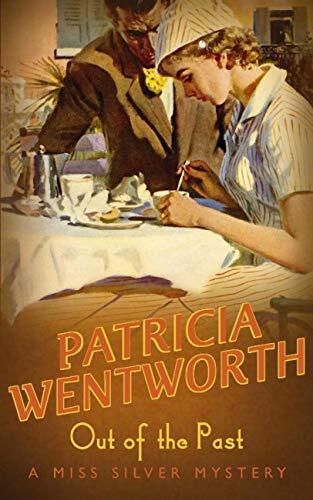
A review of Out of the Past by Patricia Wentworth – 231205
I have always found Patricia Wentworth to be an engaging writer, capable of creating page turners, but one who has a set boilerplate which she follows religiously. That is one of the keys to her success and her ability to write so many books. Out of the Past, originally published in 1953 and the twenty-third in her Miss Silver series, is one of her better novels and, by her standards, is quite dark. It deals with the consequences of the return of a bad penny, Alan Field.
Having jilted Carmona Leigh at the altar without any warning, Alan Field goes off to South America. Within three months Carmona had married James Hardwick, who had fallen in love with her instantaneously when their eyes met at the opera. James had made it his mission to win over Cremona by fair mean or foul and it emerges that there was more than a little underhand behaviour needed to secure his prize.
Out of the blue, Field returns, ostensibly in response to an advertisement for information about the papers belonging to his father, a famous artist. In reality, though, Field is desperate for money to invest in a horse farm in South America. To raise the funds he engages upon a campaign of blackmail. He points out to his stepmother that his father’s papers include incriminating evidence that he had carried out extra-marital affairs which, if published, would damage his reputation. Only some money would stop him from publishing.
On the other side of the coin he points out to Lady Castleton that some of the letters imply that her beloved younger sister, who tragically drowned, had had a relationship with his father. He tells Carmona why he was persuaded to jilt her. He drops in on a girl in the village, Darsie Anning, who he had abandoned when he had made her pregnant. So despicable a character is he that it is only a matter of time before he is murdered, found dead in a bathing hut, but which of his many enemies did the deed?
Further complications are presented by the arrival of one of the Cardozo brothers, convinced that Field had murdered his brother to get his hands on some papers which reveal the whereabouts of a haul of gold. He enlists the help of a French maid, Marie Bonnet, who sees an opportunity to blackmail the South American, as well as to use her knowledge of what happened on the night of Field’s death. Of course, she pays for her audacious attempt to leverage her knowledge with her life.
Miss Silver is on the scene and with her number one fan, Frank Abbott of the Yard, sets out to uncover the mystery in her inimitable style, a knowing cough here and knitting needles clicking. She probes seemingly cast-iron alibis, hears the stories of each of the principal suspects and uses her unique ability to get behind the person of an individual to establish the facts.
The denouement is exciting as Abbott swims around Black Rock to prevent another murder. The culprit gets away and swims off into the distance, their identity a surprise to those who have not paid close attention to the story but whose motivation fits in well with their character. There are many skeletons in the closet and often it is best if they remain undisturbed.
If you are looking to get into the Miss Silver series, this might just be the one to start with.
December 27, 2023
The Case Of The Haven Hotel
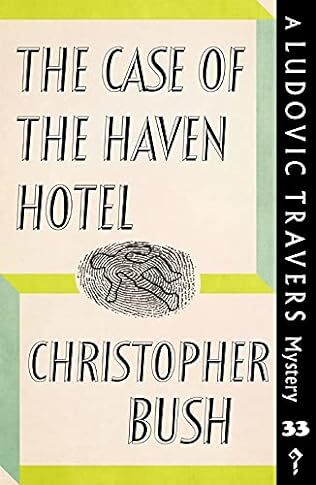
A review of The Case of the Haven Hotel by Christopher Bush – 231204
The thirty-third in Christopher Bush’s long running Ludovic Travers series, originally published in 1948 and reissued by Dean Street Press, sees the amateur sleuth on holiday at the Haven Hotel. His wife is in Switzerland and Travers has taken the opportunity to take a break, ostensibly with his old mukker, George Wharton, although the Old General’s appearance is delayed because of his workload at the Yard. Inevitably, it turns out to be a busman’s holiday for the pair.
One of the book’s undoubted strengths is its characters. A hotel allows Bush to assemble a motley collection of individuals including a writer whose face seems familiar to Travers, a former clergyman who seems to have had a colourful past, an ex-Army major who seems to be able to get his hands on luxury goods despite rationing, and a femme fatale. Bush enjoys Much of the humour is provided by Gerald, an over-active child whose mischievous behaviour irritates the guests in general and Travers in particular.
What surprises Travers is the quality and range of food at the Haven Hotel and he begins to suspect that the hotel, amongst others in the area, is the recipient of black market goods and that at least one of the hotel guests is involved. Then death intrudes into the picture in the form of a drowning, that seems, superficially at least, to have been accidental but as investigations proceed it has a more sinister complexion to it. It has been elaborately planned. Curiously, though, the normally publicity seeking author who tries to save the victim is annoyed when his picture is splashed in the local papers.
It is at this point that Wharton joins the guests and he and Travers enjoy their love hate relationship as they investigate the death. It is fair to say that they make heavy weather of sorting it all out, not helped by their habit of concealing vital evidence from each other and withholding the direction of their thoughts and theories about what happened and who the culprit might be. It does add an element of humour and competitiveness to the narrative as each wrestles to get one over the other but it does drag out the story too.
An attempt is made on Travers’ life, there is a second murder, and some revelations give more clarity to the investigations and the roles of the principal suspects. In the end it is a tale of hidden identities, guests not being quite who they seem and leading double lives. What leads to murder is a fear of recognition which would lead to the unravelling of a successful and lucrative tax avoidance scheme. Whether it is a strong enough motive to really drive someone to commit murder is questionable.
Bush plays fair with his reader, although by the time the denouement arrives there are so few suspects that the culprit comes as no surprise. While this might not be the most complex of plots that he has unleashed on his readership, it is an entertaining read with some interesting characters, giving a fascinating insight into the relationship between Travers and Wharton and with enough twists and turns to keep the reader interested.
December 26, 2023
Cracker Jokes – 2023 (3)

To complete the set
Who delivers Christmas presents to sharks? Santa Jaws
What did Santa say at the start of the race? Ready, set, ho, ho, ho!
What do you call a greedy elf? Elfish
How do you know when Santa is in the room? You can sense his presents
How do sheep wish each other a Merry Christmas? Merry Christmas to ewe
How do Christmas angels greet each other? Halo!
Who hides in a bakery at Christmas? A mince spy
What’s an elf’s favourite music genre? Wrap
What did the farmer get for Christmas? A cowculator
Why are Christmas trees bad at sewing? They always drop their needles
How does Santa keep track of all the fireplaces he has visited? He keeps a log book



